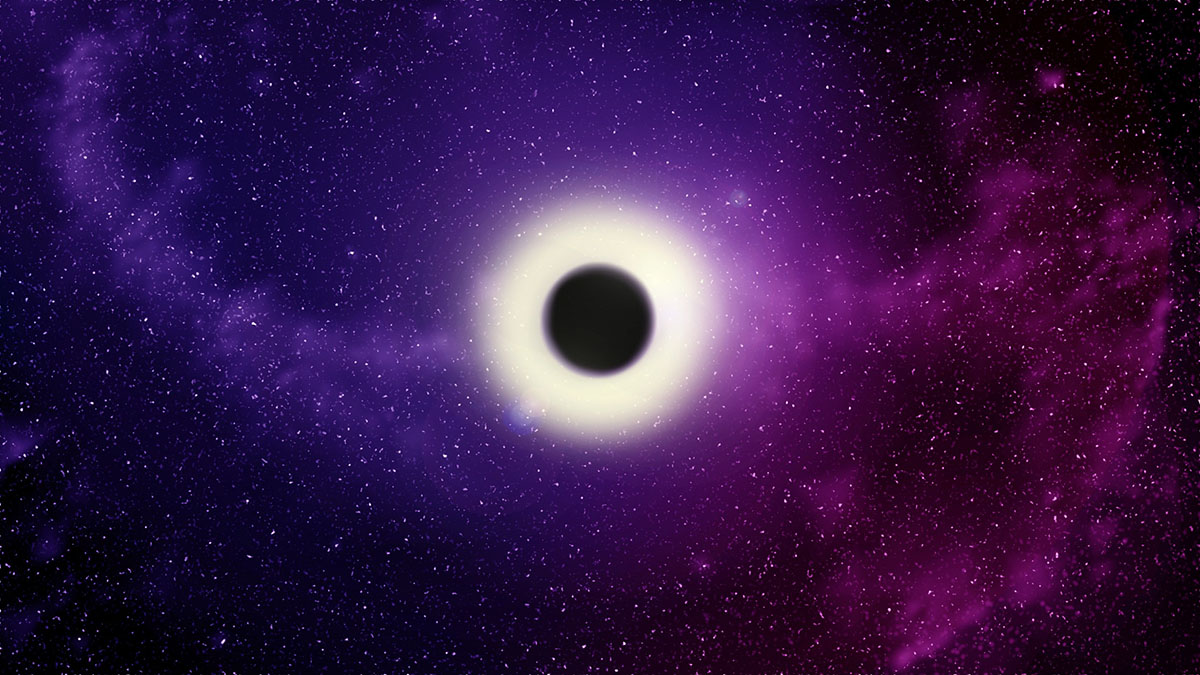putting hawking to the test with sonic blasters and supercooled gas

Falling into a black hole is an extremely complicated and difficult to study process that puzzled physicists and cosmologists for decades. Since matter that crosses the event horizon is more or less cut off from the rest of the universe, what happens to any other matter to which it may have been entangled? Can you actually fall into a black hole to an outside observer and since they may never see you fall in, we don’t need to solve the information paradox? Do any of our ideas of how the information about matter eaten by a black hole can be preserved even work? Could we make a tiny black hole and try to find out how all this works? So far, we have far more questions than answers, but we’re trying to get some experimental data to test what seem to be the most solid existing theories.
One of the proposed ideas with which we’ve been sticking is that when black holes disrupt the relationships of quantum particles near their event horizons, they have to give up energy in the process, leading to their slow, eventual evaporation. This is known as Hawking radiation, and yes, it’s named after that Hawking, who came up with the notion in the first place. And while we have been citing his work for decades now, it’s been extremely difficult to test without access to a black hole at our beck and call. While some experiments have tried using light, or microwaves and magnetic fields, they haven’t been able to demonstrate anything conclusive. But thanks to a setup at an Israeli lab which created a very effective black hole surrogate, that’s finally changing.
While it may take incredible amounts of gravitational energy to manipulate objects moving at the speed of light, interfering with objects moving at the speed of sound is a lot easier. This is exactly what the researchers did by blasting sound waves at a swirling vortex of Einstein-Bose condensate, a diffuse gas of subatomic particles cooled to near absolute zero. Just as photons can’t travel faster than light, sound waves can’t travel faster than themselves, so if they get drawn into some sort of sonic sink and can’t escape as the particles they disrupt are moving at supersonic speeds, they’re effectively behaving somewhat like the quantum particles Hawking envisioned swirling around black holes.
According to the theory, when the sound waves grazed the event horizon, a part of the wave should have been pulled into the black hole while the rest was bounced back with a little burst of added energy stolen in the process. And sure enough, every time a sound wave was trapped, some of it escaped from the sonic event horizon, just as Hawking predicted. Not only that, but the escaping sound waves were analogous to the energies and wavelengths expected from quantum particles in Hawking’s equations, showing that it’s very possible that black holes do evaporate at a slow but steady rate.
Another interesting tidbit to keep in mind is that these studies have been going on for the last five years, meaning that Hawking was still alive when the first results were published, so the famed scientist got a chance to see his life’s work being experimentally vindicated. In the year since his death, the team finished numerous improvements to get more precise data and was able to confirm not only their initial findings, but even more of Hawking’s framework. Black holes, it seems, are finally beginning to give up some of their most fascinating and complex secrets, and we’re beginning to understand how to put some of our most complicated ideas about them to the test and get better answers and more data.





